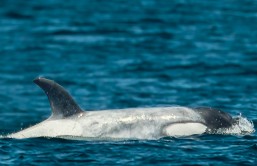Researchers discovered one of the oldest North American skeletons ever recorded in an underwater cave.
The skeleton was named "Naia," and was once a teenage girl, a Northwestern University news release reported.
"The preservation of all the bones in this deep water-filled cave is amazing -- the bones are beautifully laid out," cave-diving scientist Patricia A. Beddows of Northwestern University, said in the news release. "The girl's skeleton is exceptionally complete because of the environment in which she died -- she ended up in the right water and in a quiet place without any soil. Her pristine preservation enabled our team to extract enough DNA to determine her shared genetic code with modern Native Americans."
The skeleton is believed to be between 12,000 and 13,000 years old and shared ancestry with Native Americans. The remarkably preserved skeleton still has an intact cranium and traces of DNA.
Other extinct animals were found in the same area, such as an "elephant-like creature called a gomphothere," the news release reported.
"Research in flooded caves is much like space exploration, with divers similar to astronauts reporting back to 'mission control' -- a much larger scientific team at the surface," Beddows said. "It all has to be done on SCUBA, which is our life support system. Our science team has been supported by a great number of dedicated non-science cave divers who have committed hundreds of hours at very dangerous depths to complete this exploration."
Beddows is an expert in the formation the Hoyo Negro site where the skeleton was found.
"Research in flooded caves is much like space exploration, with divers similar to astronauts reporting back to 'mission control' -- a much larger scientific team at the surface," Beddows said. "It all has to be done on SCUBA, which is our life support system. Our science team has been supported by a great number of dedicated non-science cave divers who have committed hundreds of hours at very dangerous depths to complete this exploration."








